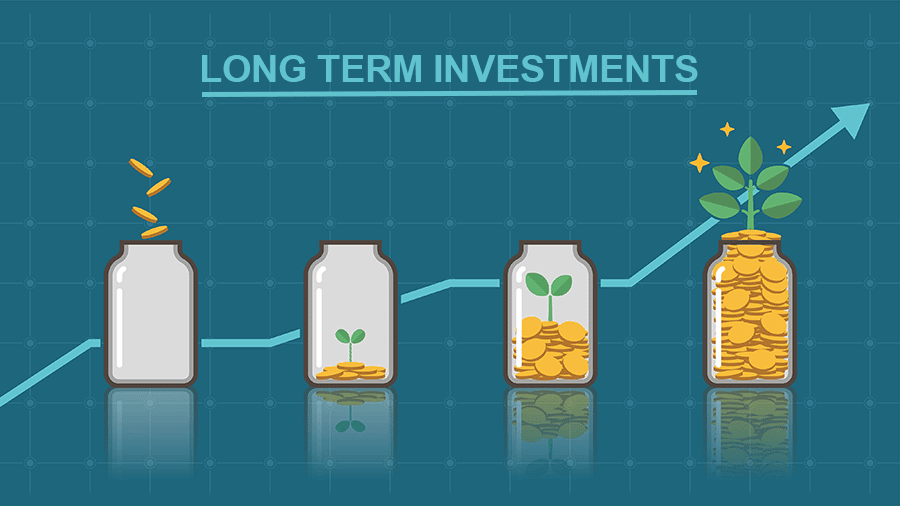Robert Powell: How should investors think about long-term averages? Joining me today to discuss that is David Shotwell, a financial planner with Shotwell Rutter Baer. David, welcome!
David Shotwell: Thanks, Bob. How are you today?
Powell: I'm doing great, and I’ll be even better after you walk us through how investors should think about long-term averages.
Shotwell: In investing, we’re constantly bombarded with statistics. It’s common for people to look at past performance and try to draw comparisons. Newer clients often look at a portfolio and see some investments down, others up, and question why certain investments are being kept.

We try to help people understand what we can learn from long-term returns. First off, if your portfolio is diversified, there’s always going to be something that isn’t performing as well as the rest. That’s just part of diversification.
We frame the conversation this way: if the market has been doing really well, your portfolio should generally be doing well, too. What’s important to keep in mind is: if my portfolio is up 12% this year, but the long-term average for a portfolio like mine is 8%, what does that mean for the future? Long-term averages tend to hold up over time, so after a period of outperformance, we should expect some downside. It's about maintaining that perspective.
Powell: When thinking about investing, we should consider historical averages. For example, since the late 1920s, small-cap stocks have averaged a 12% return, while large-cap stocks have averaged 10%. A balanced portfolio of 60% stocks and 40% bonds typically returns between 6% and 8%. Most people don’t have 100% of their portfolio in equities, so it’s a bit misleading to say, “My return was 8%, but small-cap stocks averaged 12% or 10%.” When you talk to investors and your clients, do you have to frame it in terms of their portfolio allocation, rather than comparing it to the S&P or NASDAQ?
Shotwell: Absolutely. You’ve got to make sure you’re doing an apples-to-apples comparison. Most of our clients have what we call the "60-40 portfolio," the "Goldilocks" portfolio. If you’ve got 40% in bonds and 60% in stocks, comparing your return to the long-term average of large-cap stocks won’t be very meaningful.
What you want to focus on is the weighted average return. To keep it simple, let’s assume 10% for the stock portion and 5% for bonds. Sure, if you’ve got small-cap stocks and international stocks, it’s going to vary a bit, but don’t let those details overwhelm you.
Powell: In an article you wrote for Retirement Daily, you mentioned that while people are often told past performance is no guarantee of future results, you believe that the average can give us some insight into what’s ahead.
Shotwell: That’s right. The 10% average return for the stock market dates back to the entire history of the market, through good times, bad times, and everything in between. If you look at that history, and consider the world’s economic growth, we can reasonably expect similar patterns, unless something really changes in the dynamic.
For example, if your stock funds are up 20% and the long-term average is 10%, eventually, they’re likely to underperform that. Conversely, if we’re in a tough market and your portfolio is down 15%, it’s comforting to know that we’re probably going to have a couple of good years that will help make up for that loss.
Powell: Let’s talk about the idea of outperforming the historical average. Some investors might say, “Let’s take money off the table and liquidate my portfolio.” What do you think about that?
Shotwell: While there’s predictive value in the sense that we’ll eventually see reversion to the mean, it doesn’t tell us when or how that will happen. If you’re seeing outperformance, getting back to the mean could mean a few years of average returns or one really bad year, and then it’s over.
There’s an old market cliché: "The markets can stay irrational longer than you can stay solvent." Just because you’re seeing outperformance doesn’t mean you can predict when that change will come.
Powell: I often receive expected return rates for the next seven or ten years from major investment firms. In some cases, these predictions are much lower than historical averages. Do you place any weight on these kinds of forecasts?
Shotwell: Without specifics, it’s hard to say, but I generally take them with a grain of salt because predictions can vary so widely. At any given time, you can find different predictions that seem logical based on reasonable assumptions, and they’ll often differ dramatically. The best thing about predictions is the more you make, the more likely you are to be right sometimes.
Powell: And if you're right 50% of the time, you’re doing great! I always say that Ted Williams made it to the Hall of Fame with a .400 batting average. If you’re right half the time, you’re ahead in this world.
Shotwell: I think most macroeconomists would be thrilled with a .400 average.
Powell: Is there anything else we should keep in mind when thinking about how investors should approach long-term averages?
Shotwell: Just remember that long-term averages are probably the best prediction you can make. In the short run, who knows what the market will do tomorrow? We can’t predict global or economic headlines that will come out of nowhere and cause the market to react. But when you look at the market over time, patterns do emerge that, while they don’t tell us the exact timing or magnitude, give us a pretty good idea of where we should end up in the long run.
Powell: David, I really appreciate you writing for Retirement Daily and sharing your insights with us in these videos. Thank you so much for your time.
Shotwell: It’s always a pleasure, Bob. Thank you.
